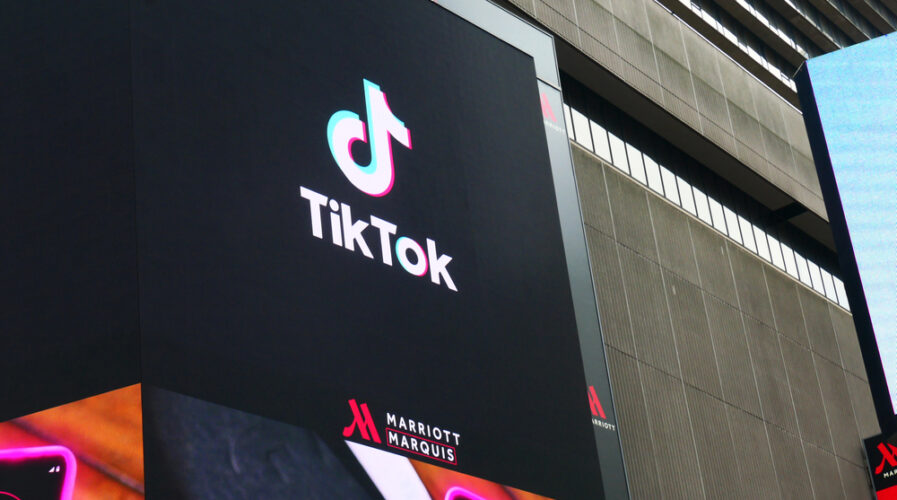
Tiktok’s popularity in the region, bans in US, India, HK means that Southeast Asia might be ByteDance’s focus. Source: Shuttersrtock
Is SEA now the key to TikTok’s global strategy?
- TikTok’s popularity in the region, coupled with bans in the US, India, HK means that Southeast Asia might be ByteDance’s focus for the foreseeable future
TikTok is the most downloaded app in Southeast Asia – it’s the most-downloaded app in a bunch of places – amassing a staggering 507 million users within the calendar year of 2019 alone.
TikTok’s parent company ByteDance, meanwhile, has generated in excess of US$3 billion in net profit on top of more than US$17 billion in revenue last year, and its collective stable of products can count on around 1.5 billion active users per month.
Southeast Asia is one of the fastest-growing sub-regions in the world, and its near 650 million-strong population is increasingly mobile internet-savvy. Uptake of digital services by businesses and consumers alike is experiencing major growth – a trend that has only been accelerated by the health pandemic, as organizations race to redirect the operations to be increasingly online-oriented.
Last month, it became clear that ByteDance was looking at setting up shop in Singapore, as its new base outside of its native China. Bytedance has bid for a license to operate a digital bank in the city-state, and it is believed that the company intends to set up a data center in Singapore, that will facilitate the operations of its applications suite including TikTok and Lark, an enterprise software business.
With a valuation of over US$140 million, the world’s most valuable startup is also set to create hundreds of jobs and invest “billions” in Singapore over the next few years, making its intentions to entrench itself in the Southeast Asian region clear. Southeast Asia offers a clearer playing field for ByteDance today, free of the political mire its faced in the US and India (until recently, Tiktok’s biggest and second-biggest markets, respectively).
Collectively TikTok has been downloaded over 300 million times in SEA, nearly half of the region’s 630 million population. More than half of those who downloaded it are under 30 years old, according to mobile application data from research firm Sensor Tower.
In countries such as Indonesia, Thailand, Malaysia, and the Philippines, Tiktok is among the top 10 app downloads, while amongst video apps specifically, Tiktok is usually ranked first, the report said. “Due in part to social media, video has also quickly risen through the ranks of digital marketing over the past few years – nearly 9 in 10 companies use video as a marketing tool today,” Arjun Sarwal, Tiktok’s Head of Southeast Asia Regional Business (Performance), told Tech Wire Asia recently.
With such popularity in fast-growing SEA, ByteDance is already planning to bundle Tiktok as part of a suite of interconnected apps that will feature live video streaming, messaging and music, while simultaneously taking on US tech titans Facebook and Google who are also investing heavily in the region.
Nine out of 10 businesses in SEA are considered small to medium-sized enterprises (SMEs), and Tiktok will look to cultivate these SMEs as alternative, ‘creator’-driven advertisers for its nascent TikTok for Business platform and to build revenue as a self-standing entity.
Furthermore, Tiktok’s SEA business marketing head Chew Wee Ng told Reuters that the platform is currently testing live social commerce streams that were popularized in China as “shoppertainment” as a possible new revenue-generating channel.
Live-streaming commerce is also becoming popular in Indonesia, where nearly half of Tiktok’s 360 million Southeast Asian downloads come from. Indonesia briefly banned TikTok in 2018 for posts they said contained “pornography, inappropriate content and blasphemy”, and Thailand and Vietnam have also considered bans for different political reasons.
In response, Tiktok localized most of its content guidelines for individual Southeast Asian countries, appointing local content moderators to ensure allowed content was in-line with local preferences. That has often meant strict censorship of local political content in several countries, including Vietnam and Thailand.
READ MORE
- Ethical AI: The renewed importance of safeguarding data and customer privacy in Generative AI applications
- How Japan balances AI-driven opportunities with cybersecurity needs
- Deploying SASE: Benchmarking your approach
- Insurance everywhere all at once: the digital transformation of the APAC insurance industry
- Google parent Alphabet eyes HubSpot: A potential acquisition shaping the future of CRM


